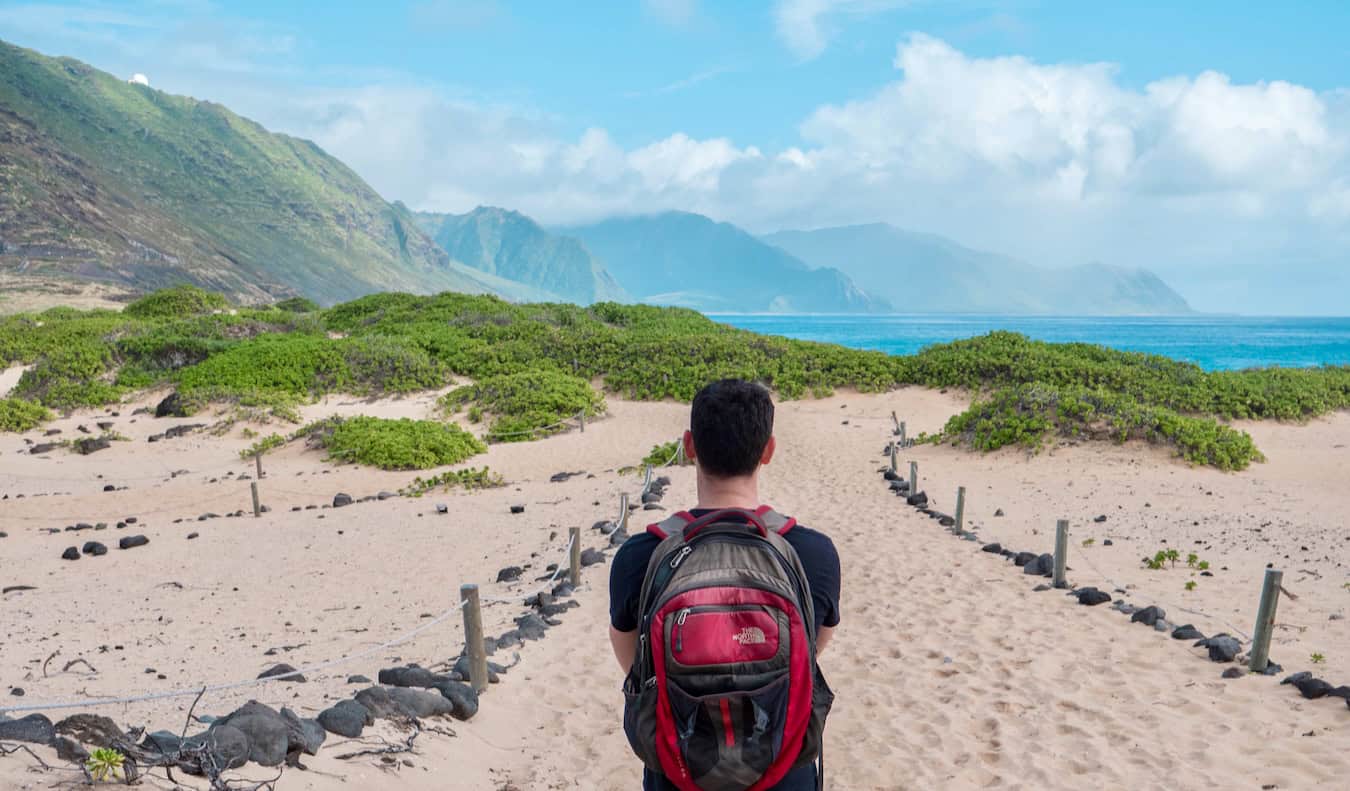The influence of travel duration on tourists’ perceived comfort and satisfaction in itineraries

The Influence of Travel Duration on Tourist Comfort and Satisfaction
Travel is an experience that often embodies the essence of adventure, relaxation, and personal enrichment. Yet, the duration of travel plays a pivotal role in shaping how tourists perceive their comfort and overall satisfaction. Many travelers overlook the fact that the length of their journeys can dramatically influence their enjoyment levels. Understanding this aspect can enrich one’s travel experience immensely.
To unpack this idea, it’s essential to explore several key aspects that are heavily influenced by travel duration:
- Fatigue Levels: Extended travel can lead to significant physical and mental fatigue. For instance, long flights followed by comprehensive itineraries can overwhelm travelers, resulting in irritability and a decreased ability to appreciate scenic views or cultural experiences. A study published in the *Journal of Travel Research* highlights that tourists enduring lengthy travel schedules frequently report feeling exhausted, which adversely affects their enjoyment levels.
- Opportunity for Exploration: On the flip side, longer trips afford travelers the chance to immerse themselves in their chosen destinations. A two-week vacation allows for a more leisurely pace, encouraging deeper exploration of local culture, cuisine, and history. For example, a family embarking on a two-week road trip across the American Southwest can stop at numerous national parks, visit historic towns like Santa Fe, and engage in local festivals—experiences often missed in shorter trips.
- Itinerary Stress: Conversely, tightly packed itineraries characteristic of short trips can lead to heightened stress. When travelers attempt to see numerous attractions in quick succession, they may miss out on the joy of spontaneous exploration. Research indicates that tourists who create overly ambitious schedules often feel pressured, which can lead to dissatisfaction. For instance, a weekend trip to New York City can become overwhelming if tourists rush from Times Square to the Metropolitan Museum of Art without time to soak in the atmosphere.
Looking at the broader landscape of American travel trends, we find that tourists who embark on longer vacations often report elevated levels of satisfaction compared to those who opt for rapid, whirlwind getaways. According to a report by the U.S. Travel Association, travelers who enjoy vacations lasting a week or longer frequently cite richer experiences and memories as a key factor in their overall enjoyment.
Ultimately, the relationship between travel duration and tourist comfort is complex, revealing both advantages and drawbacks. Short and long trips each have their unique appeal, but striking a balance between the two may yield the most rewarding experiences. As we continue to investigate this vital aspect of travel, we invite you to consider how planning the right duration can significantly enhance your next getaway, creating lasting memories rather than fleeting moments.
DIVE DEEPER: Click here to explore thematic itineraries

Understanding the Impacts of Travel Duration on Tourist Experiences
The relationship between travel duration and tourists’ perceived comfort and satisfaction in itineraries is multifaceted, comprising several layers that deserve careful examination. One might argue that the time spent traveling not only determines the quantity of activities but also influences the quality of experiences. To better grasp this dynamic, we can analyze how these components intertwine and affect travelers’ feelings throughout their journeys.
Fatigue vs. Fulfillment
One of the primary factors influencing tourist satisfaction is fatigue. Research consistently shows that long travel durations, particularly in the context of long flights or prolonged road trips, can lead to a state of exhaustion that detracts from the enjoyment of the destination. For example, a traveler returning from a 16-hour flight to Asia may find it challenging to adjust to the local time zone while already grappling with jet lag. This fatigue diminishes their ability to enjoy an itinerary filled with intriguing cultural attractions and culinary explorations.
Conversely, travelers on longer itineraries often savor a sense of fulfillment that cannot be replicated in abbreviated trips. A survey by the travel agency AAA revealed that over 70% of respondents feel more satisfied when their trips extend beyond a week. This sentiment echoes the understanding that leisurely travel affords immersive experiences—allowing tourists to forge connections with locals, enjoy dining experiences, and absorb the essence of a new environment without the pressure of rushing.
The Balance of Exploration and Schedule
Central to the discussion is the concept of itinerary stress, significantly affected by the travel duration. Travelers on tight schedules often feel compelled to hit multiple destinations within a short time frame. This leads to a checklist mentality that can overshadow the enriching moments of discovery. Notably, it has been found that over-scheduling diminishes the joy of spontaneous detours, rendering trips less enjoyable. For instance, a whirlwind weekend in New Orleans, packed with sightseeing from the French Quarter to the Garden District, may result in tourists feeling they experienced more hustle than harmony.
- Flexibility: Longer trips grant greater flexibility to explore off-the-beaten-path destinations.
- Deep Engagement: Extended durations allow tourists to engage more deeply with the culture and lifestyle of their chosen locale.
- Community Interaction: More time tends to lead to interactions with locals, fostering a richer understanding of the region.
Research by the Global Business Travel Association emphasizes that travelers who engage in extended trips report heightened levels of enjoyment and relaxation. Those who embrace the chance to travel at a more leisurely pace reflect on their journeys with a greater sense of satisfaction, countering the rushed chaos of shorter itineraries.
In essence, the complexities surrounding travel duration highlight how it shapes not only the physical aspect of comfort but also the emotional landscape of a trip. As travelers gear up for their future adventures, considering the duration of their itineraries may open the door to new levels of satisfaction, allowing for both personal enjoyment and unforgettable experiences.
As travelers embark on their journeys, the duration of their trips plays a pivotal role in shaping their overall experiences. Research indicates that longer travel durations can significantly enhance a tourist’s sense of comfort and satisfaction. When tourists have more time to explore their destinations, they are often able to engage more deeply with the local culture, leading to greater emotional connections and fulfilling experiences.Itineraries that allow for extended stays not only provide opportunities for sightseeing but also foster relaxation. Tourists can leisurely explore attractions without the pressure of fitting everything into a short timeframe. This freedom contributes to a more enriching experience, where they can absorb the ambiance and nuances of a location. Additionally, tourists who feel they have ample time often report feeling less rushed, which translates into a higher level of perceived comfort during their travels.Moreover, longer itineraries facilitate more immersive activities, such as culinary classes, local tours, and interactions with residents, all of which can elevate satisfaction levels. Tourists appreciate the chance to participate in experiential travel, leading to lifelong memories and deeper satisfaction with their chosen destinations. This segues into the impact of flexibility, where travelers can adapt their plans based on preference and mood, enhancing their overall enjoyment of the trip.An interesting trend is the growing emphasis on “slow travel,” where tourists deliberately choose to spend more time in a single destination to truly understand it. This approach is not only beneficial for the traveler but also positively impacts local economies, as longer visits encourage tourists to explore lesser-known areas, supporting smaller businesses and community initiatives.As we delve deeper into the relationship between travel duration and perceived comfort levels, further examination reveals a clear correlation: the more time tourists allocate to their travels, the greater their reported satisfaction. The challenge lies in crafting itineraries that maximize this relationship, ensuring a perfect balance between exploration and relaxation for a truly memorable experience. By understanding these dynamics, travel planners, agencies, and individual travelers can create more fulfilling and enriching journeys that cater to tourists’ needs and desires, enhancing their overall trip satisfaction.
DIVE DEEPER: Click here to uncover more cultural experiences
The Role of Travel Duration in Shaping Tourist Expectations
The interplay between travel duration and tourists’ expectations is another salient aspect that impacts their perceived comfort and satisfaction. The anticipation surrounding a trip can significantly affect how travelers feel about their experience, and those expectations are often shaped by the length of stay and the planned itinerary.
Expectation Management
When embarking on shorter trips, travelers may grapple with heightened expectations due to the limited time available to explore. Research from the Cornell University School of Hotel Administration indicates that when tourists anticipate a whirlwind itinerary, they may adopt a mindset of cramming in as many activities as possible. As a result, these travelers might approach their adventures with an air of excitement yet, paradoxically, overwhelming pressure. Such dynamics contribute to feelings of dissatisfaction when activities inevitably don’t unfold as planned.
- Limited Time, Greater Pressure: Short trips can lead to a race against the clock, reducing overall enjoyment.
- Exploration Anxiety: Travelers may experience anxiety over missing out on highlights, dampening their comfort level.
- Negative Comparisons: The tendency to compare shorter experiences to longer, more leisurely itineraries can exacerbate dissatisfaction.
In contrast, longer itineraries foster a more relaxed atmosphere, allowing travelers to recalibrate their expectations. The flexibility embedded in extended trips permits exploration without the weight of a schedule looming overhead. As a result, tourists can immerse themselves in the local culture with ease, leading to a more enriching travel experience.
The Satisfaction of Culinary and Cultural Journeys
Moreover, duration plays a crucial role in the satisfaction gleaned from culinary and cultural experiences. Travelers with extended itineraries can dedicate time to sample authentic cuisine and partake in cultural festivities—activities that shorter trips often preclude. A study from the Food Travel Monitor revealed that 81% of respondents indicated their travel enjoyment was tied to their experiences with local food and traditions. The act of savoring regional dishes, participating in cooking classes, or attending local festivals creates memorable moments that can enhance the overall trip satisfaction.
For instance, a two-week adventure through Italy offers tourists the chance to explore the nuances of regional Italian food, while a three-day trip may limit sampling to just one popular restaurant chain. The same principle applies to cultural experiences, where engagement with local art forms and traditions deepens as travel duration extends, often leading to stronger emotional connections and, consequently, greater satisfaction.
Travel Duration and Social Connections
Another dimension to consider is the impact of travel duration on social interactions. Longer trips typically allow tourists to forge deeper connections not only with the destination but also with fellow travelers and locals. Many travelers report that social interactions enhance their enjoyment of a trip significantly.
- Cultural Exchange: More time enables richer cultural exchange, enhancing travel fulfillment.
- Long-term Friendships: Extended itineraries foster relationships that can last beyond the journey.
- Shared Experiences: Group dynamics can strengthen communal bonds, further enriching the travel experience.
The chance to ease into a new social environment, whether through casual encounters in local cafés or structured tours, leads to a greater sense of belonging and comfort during the journey. Thus, as both emotional and social factors intertwine with travel duration, a comprehensive understanding emerges, showcasing how this element influences tourists’ overall satisfaction.
DIVE DEEPER: Click here to discover more
Conclusion: Navigating the Nuances of Travel Duration
In conclusion, the influence of travel duration on tourists’ perceived comfort and satisfaction cannot be understated. The length of a trip shapes not only expectations but also the emotional and social dimensions of the travel experience. As we have explored, shorter itineraries often result in heightened pressure and anxiety, overwhelming travelers who strive to make the most of their limited time. This pressure can detract from the enjoyment of their adventures, leading to dissatisfaction when experiences do not meet their lofty expectations.
Conversely, extended travel durations provide a platform for a more enriching experience, allowing for exploration at a relaxed pace. Tourists can delve into local culture, savor authentic cuisine, and form meaningful connections, thus amplifying their overall satisfaction. The bonding moments shared with fellow travelers and locals enhance the sense of belonging, which is a crucial component of a fulfilling journey.
As the industry continues to adapt to changing tourist preferences, it is essential to acknowledge the significance of travel duration when curating itineraries. Both travel agencies and tourists should prioritize a balanced approach, valuing leisure alongside exploration to ensure that each experience leaves a lasting imprint. Ultimately, understanding the intricate relationship between travel duration and tourists’ comfort and satisfaction opens up new avenues for creating journeys that resonate deeply with wanderers, inviting them to explore the world in ways that nurture both their souls and their taste for adventure.


